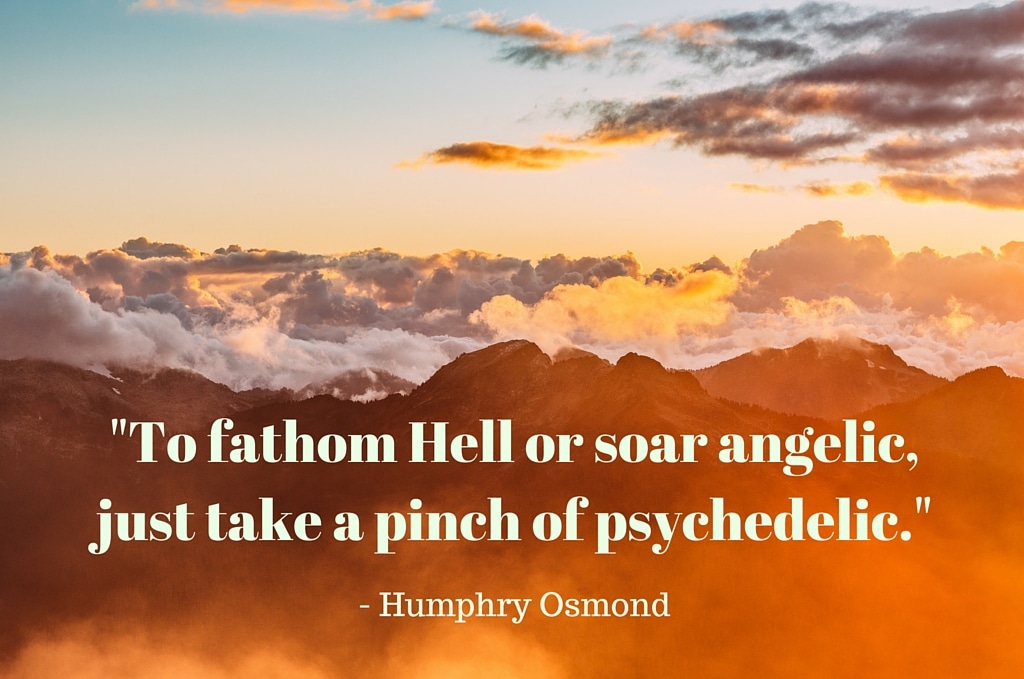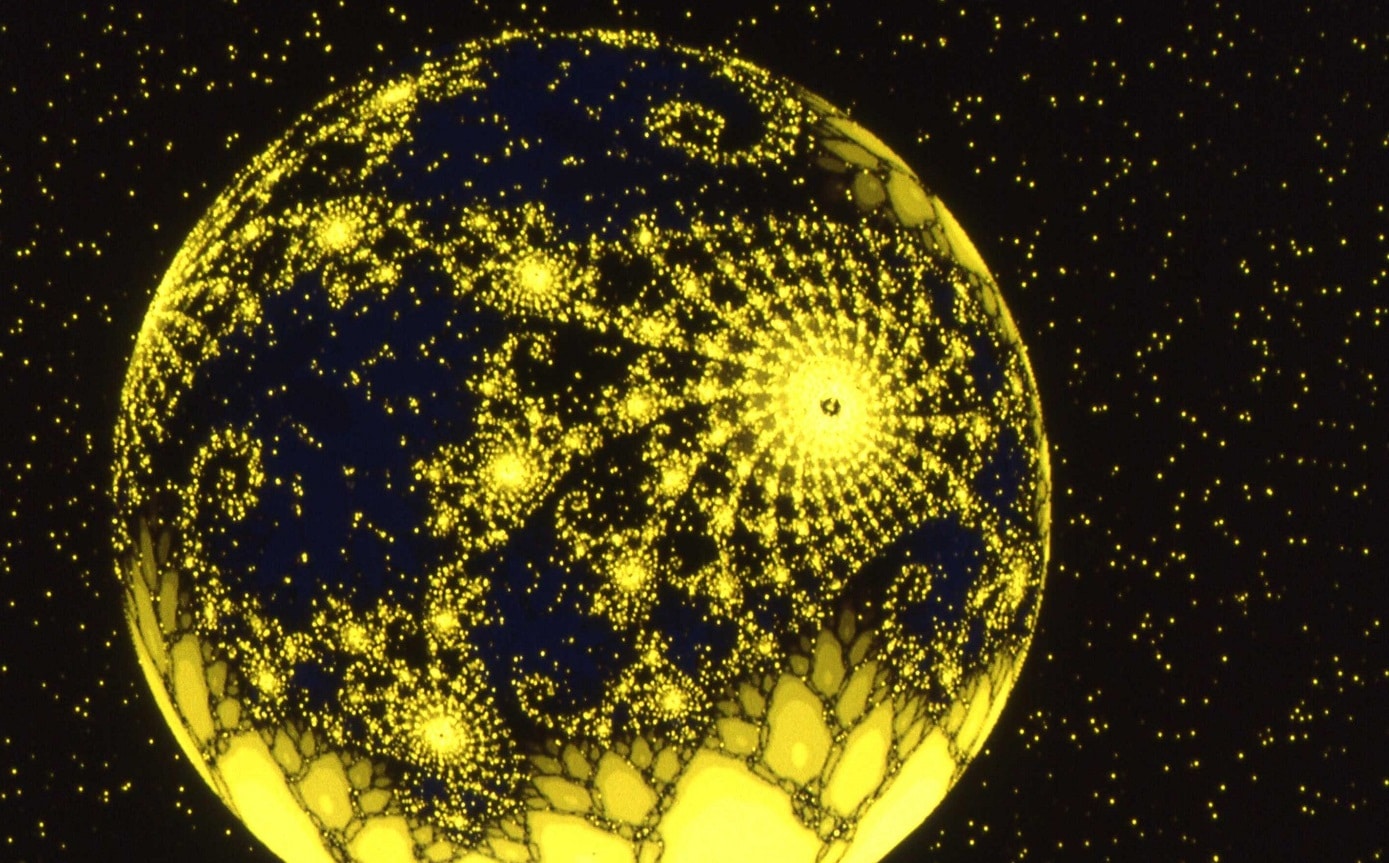Dr. Humphry Osmond is probably the most influential person in psychedelics you’ve never heard of. Osmond was a respected British psychiatrist who was among the first people to study psychedelics in the 1950s before they were banned. His research with LSD and mescaline helped set the stage for the fledgling field of psychedelic research, highlighting the potential that psychedelic substances had to offer mankind in the fields of psychology and addiction treatment. His encounters with his contemporaries had enormous ripple effects that would influence millions of lives around the world. Here are five incredible facts about Humphry Osmond and his work.
1. He inspired Aldous Huxley’s The Doors of Perception.
One of the most influential books about psychedelics would never have been written without Osmond. In the 1950s, famous author Aldous Huxley heard about Osmond’s work with LSD and mescaline and reached out to him to see if he could try mescaline. At a meeting in Los Angeles, Osmond met Huxley and provided him with the mescaline and sat for Huxley during his trip. The result of the experience was Huxley penning the seminal The Doors of Perception.[1.”Humphry Osmond,” Wikipedia, accessed November 19, 2015, https://en.wikipedia.org/wiki/Humphry_Osmond.]
2. He coined the term “psychedelic.”
The term psychedelic, which means “mind-manifesting,” was coined by Humphry Osmond and suggested to his peers in 1957 at a meeting of the New York Academy of Sciences. He borrowed ancient Greek to give the word “psychedelic” meaning, using the Greek words psyche (mind) and delos (manifest). Aldous Huxley, in a letter to Osmond, came up with his own term, “phanerothyme,” which he suggested to Osmond in the rhyme. “To make this trivial world sublime, take half a gram of phanerothyme.” Osmond replied with his own rhyme, “To fathom Hell or soar angelic, just take a pinch of psychedelic.” Osmond’s term was adopted, giving these unique substances their distinct identity and classification.
3. He inspired the founder of Alcoholics Anonymous with his pioneering research on psychedelics and alcoholism.
Much of Osmond’s early work with LSD centered around alcoholism treatment. Seeing a potential link between delirium tremens and the effects of LSD, Osmond hoped that a psychedelic experience could shake heavy drinkers out of their life-threatening habit. Osmond claimed to achieve a very impressive 50% success rate in his study, but it was one of his subjects that may have influenced the field of alcoholism treatment the most. Bill Wilson would go on to found Alcoholics Anonymous and say of LSD: “I consider LSD to be of some value to some people, and practically no damage to anyone.”[2.”Did Bill Wilson Use LSD?” Alcoholics Anonymous Central Texas, accessed November 19, 2015, https://www.texasdistrict5.com/lsd.htm.],[3.Amelia Hill, “LSD could help alcoholics stop drinking, AA founder believed,” The Guardian, August 23, 2012, https://www.theguardian.com/science/2012/aug/23/lsd-help-alcoholics-theory.]
4. He administered mescaline to a British politician for broadcast on the BBC.
In 1955, Parliament member Christopher Mayhew heard of Osmond’s work and invited Osmond to dose him with mescaline on film to show on the BBC. In the end, the film was never shown, but a copy of it is available today. Thirty years later, Mayhew gave a politically diplomatic response to the experience, saying, “I hope and pray it never helped anybody to experiment with drugs,” but added, “Nevertheless, the actual experience seems to me be profoundly interesting and thought-provoking….[I experienced] a state of euphoria for a period of time that didn’t end for me, it didn’t last for minutes or hours, but for months.”
5. He attended a Native American peyote ceremony, connecting contemporary research of psychedelics with their indigenous roots.
Enthusiasm for psychedelics among Westerners and Europeans may be recent, but some ancient indigenous cultures have used it for generations. In the early 1960s, Dr. Osmond attended a peyote ceremony with the Native American Church and was awestruck with the power of the peyote experience and the graciousness of his host. Much like Gordon Wasson and Alan Richardson’s experience with psilocybin and the Mazatec tribe in the 1950s, Osmond’s connection to the psychedelic legacy of Native Americans was significant for the time, as he grounded his new field of research in the wisdom of ancient indigenous traditions. Osmond said of his experience “[M]y Indian hosts…took me back to a life through which all mankind has passed. A harsh, fierce, dangerous, passionate life where hunter and hunted are one. A life rich in beauty and meaning.”[4.Humphry Osmond, “Peyote Night,” Tomorrow, Spring 1961, https://www.psychedelic-library.org/peyote.htm.]











